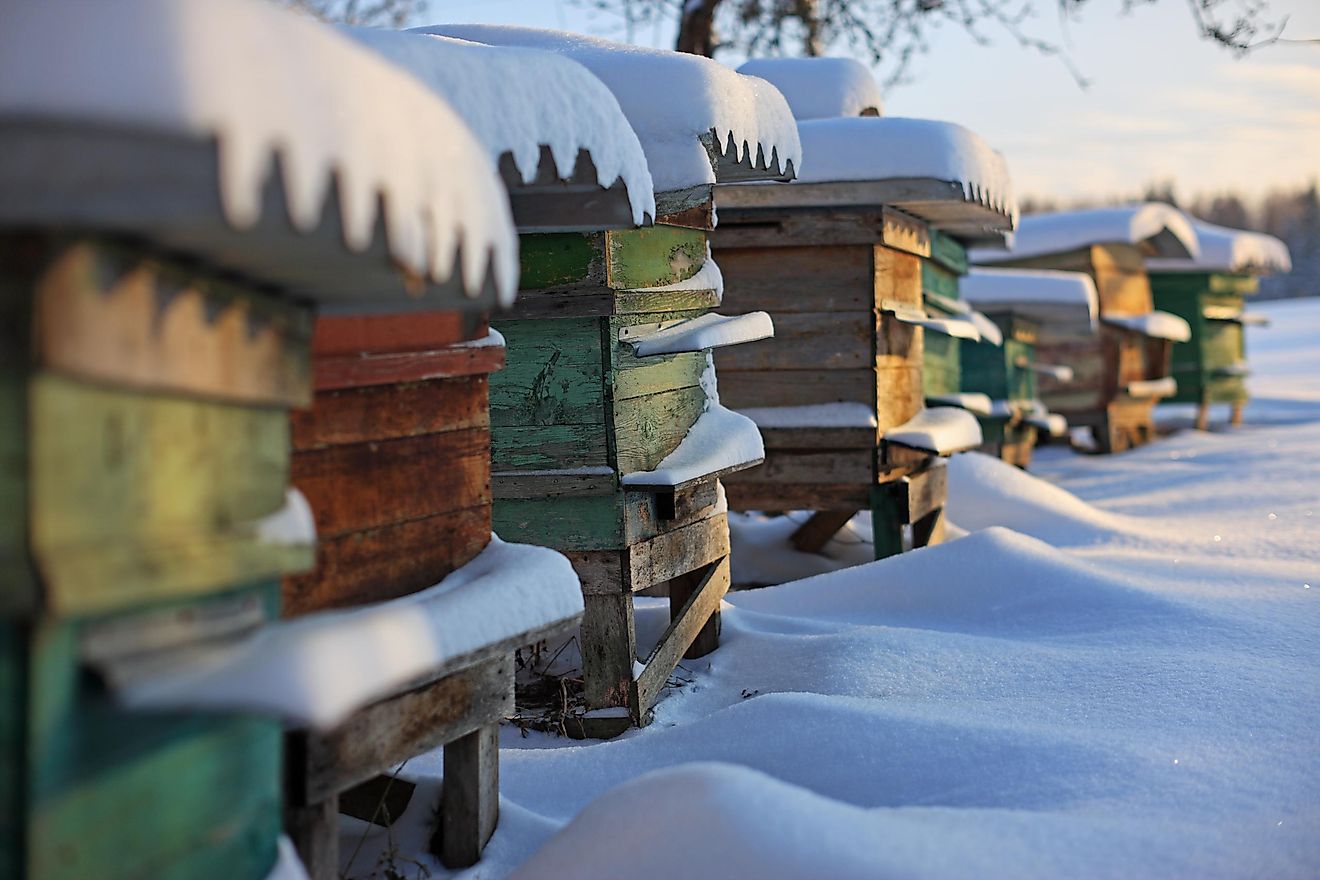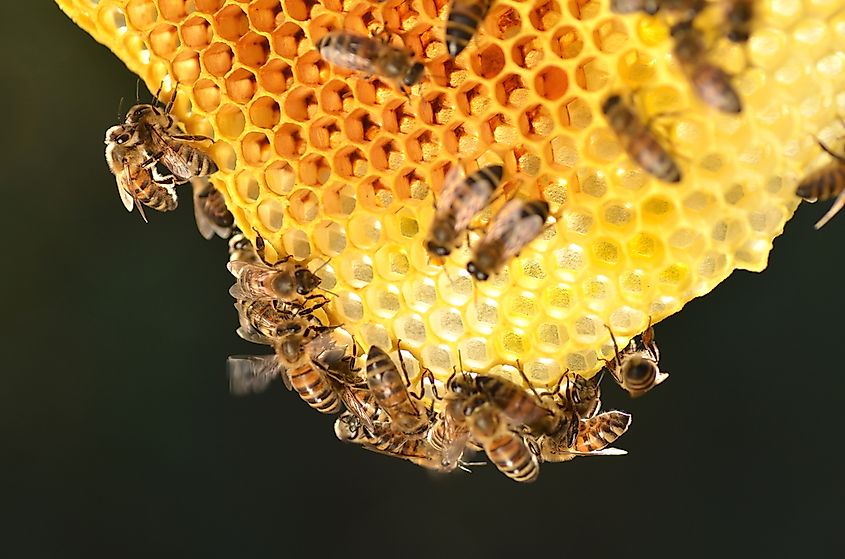What Do Honeybees Do In The Winter?

The sound of spring would be incomplete without the little bees buzzing around, foraging, and pollinating flowers. However, just as the temperature drops below 57° F, these bees are nowhere to be seen. Wasps and bees hibernate during the cold winters, but not honeybees. So, when it comes to many species, only the queen survives the cold months. During the spring, she comes out and establishes a new colony.
But the honeybees have a different winter story to tell.
Reaping The Benefits In The Winter
Honeybees do not hibernate during the winter. They are quite active, and it is precisely the activity and honey that keep them alive. Before the temperature starts dropping, the honeybees forage the flowers and make as much honey as possible for the winter. When the cold period starts, they survive on the honey they made. They make honey, royal jelly, and bee bread.
The amount of stored honey is extremely important; otherwise, the bees will freeze before spring. Honeybees have a social hierarchy divided into drones, workers, and queens. The male drones die in the winter because the other bees have no use for them. The other bees save on honey that the drone bees would eat. Although it might sound cruel, this is crucial for the hive to survive. All the worker bees are females. So, only the worker bees and the queen survive the winter.
Worker Bees, Huddle Up!

If the bees are experiencing cold winters, they cannot survive just by being in the hive and eating honey. They need to keep themselves warm, but more importantly, in the bee world, they need to keep the queen warm. The worker bees huddle up in the center of the hive with the queen bee in the middle. This is called a “winter cluster.”
With their heads facing the center, they start generating heat by fluttering their wings and shivering — the colder the winter, the tighter the cluster. Since the bees need to do this activity constantly, they lose a lot of energy. That is why they feed on honey first and then begin raising the temperature through the vibration of their flight muscles.
The Cluster Rotation
Imagine thousands of bees constantly fluttering and shivering. Well, the temperature in the center of the hive reaches up to 93° F. The queen must be feeling quite warm and cozy in there. But what about the worker bees at the edges of the hive? Honeybees have a system. When those bees on the margins get cold, they go through the other bees towards the center, and the other bees move toward the edges, allowing the bees to get warm. However, during extreme winter conditions, it becomes impossible for the bees to move. And if they cannot move, they die from starvation, unable to reach the honey reserves.
During warmer winter days, honeybees leave the cluster just long enough to get rid of the body waste.
A Few Short Facts About Honeybees
- Honey is the only insect made product that humans eat, and it can never spoil.
- Worker bees have short lives as they live up to six weeks.
- The queen bee lives up to five years.
- An average worker bee makes 1/12 teaspoon of honey during her life.
- One pound of honey requires two million flowers that bees must forage.











